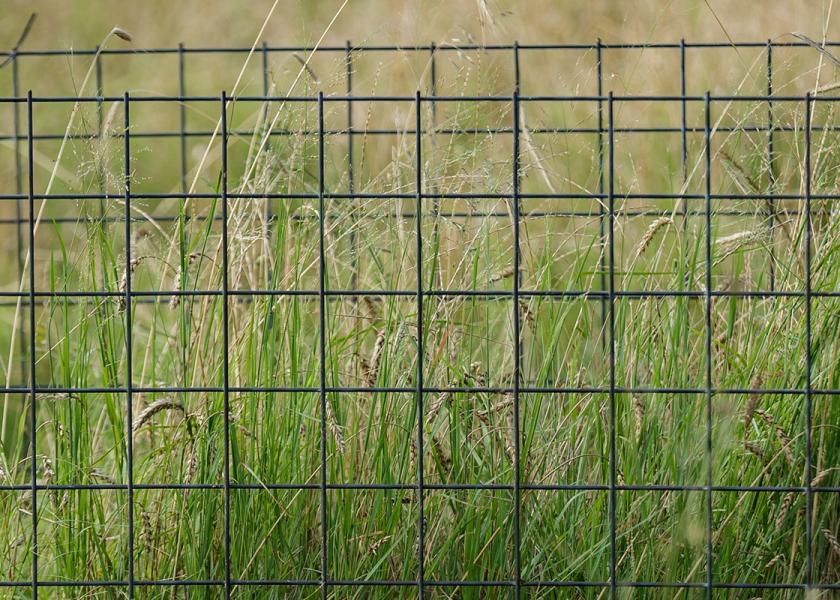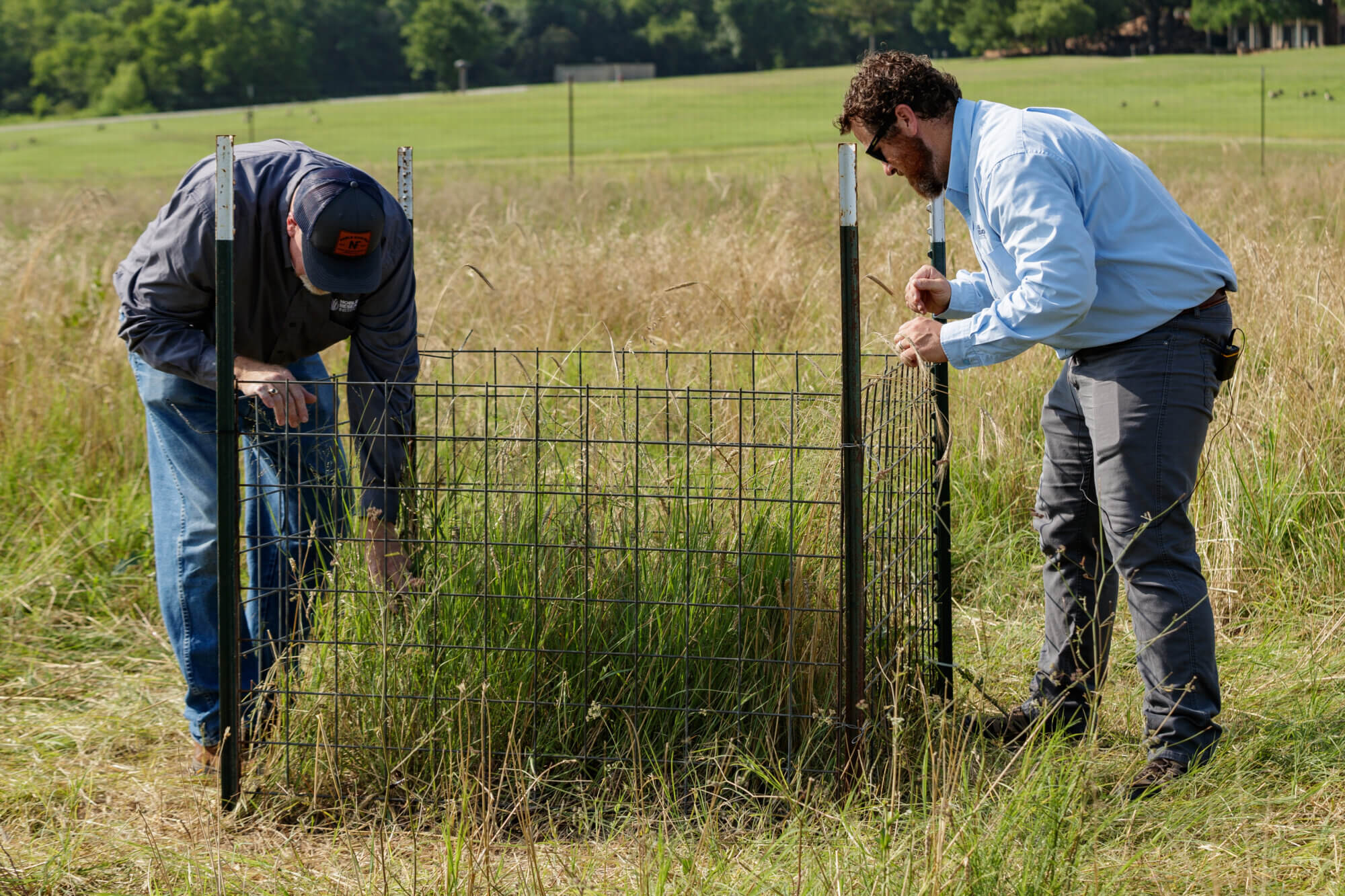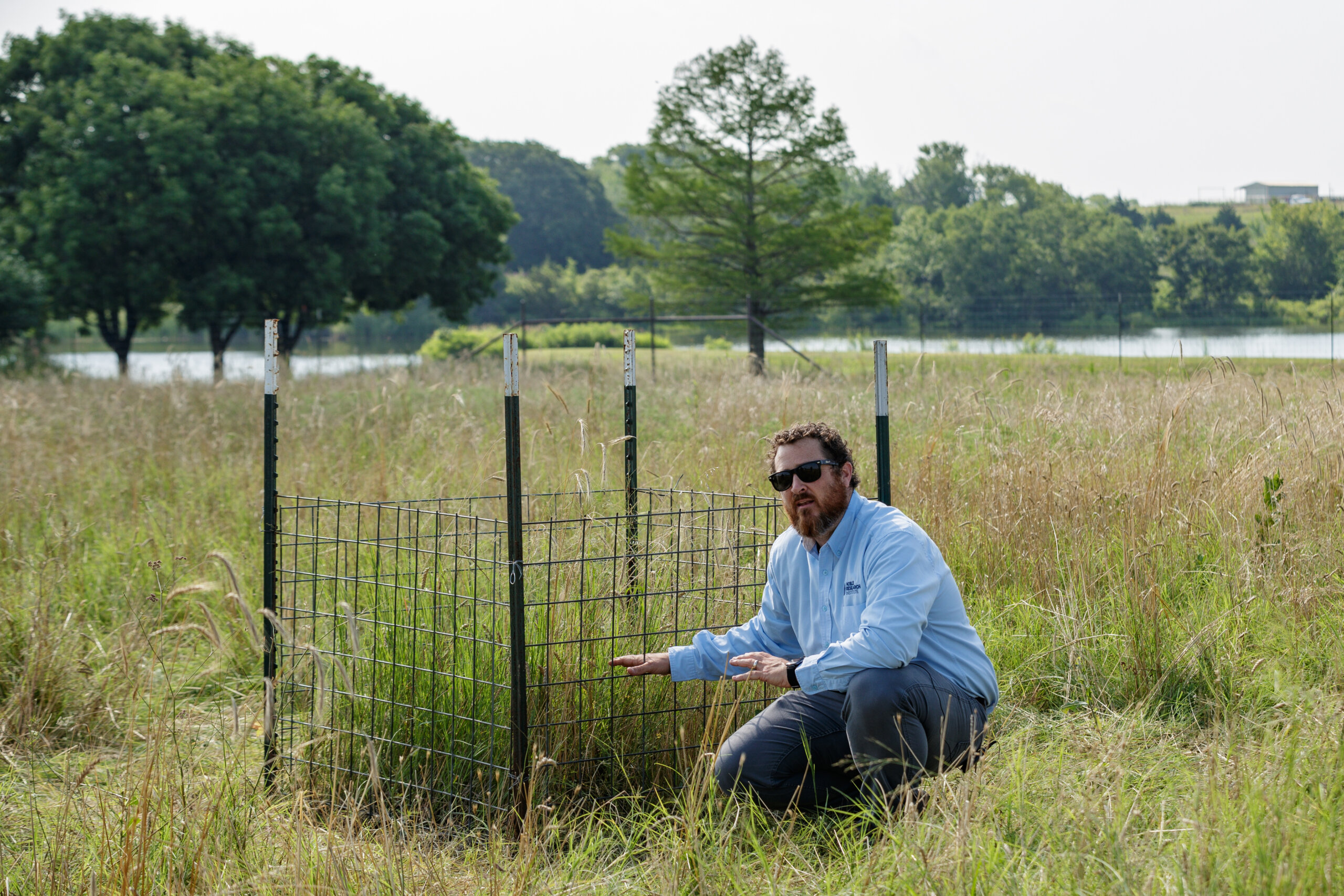Gain a New View of Your Pastures’ Forage Potential

Reprinted with permission from the Noble Research Institute noble.org.
It’s all too easy to bypass what we see – or fail to see – in the places we see the most.
Noble Research Institute regenerative ranching advisors Will Moseley and Steve Swaffar say a grazing exclosure – a small, fenced area inside a grazing unit that livestock cannot access that gives the rancher a direct view of what and how much was grazed around it – is perhaps the simplest method to help see the potential of our land’s production.
“We get in our routine, we overlook things, or don’t see what’s really out there,” Moseley says. “But once we stop and put an exclosure up and take a fresh look at what’s going on there, you can learn a lot.”
How to build a grazing exclosure
An exclosure can be as large or small as the materials you have available dictate, but Moseley recommends fencing off an area at least 3 feet by 3 feet. It doesn’t need to be any bigger than 6 by 6. Build it with whatever you have available – four cattle panels work well, or try a 16-foot hog panel bent into a square or circle, anchored by a t-post.

Whatever you use, be sure it’s tall enough that your livestock – be they cattle, sheep, goats or other species – can’t reach over the top or access forage below or through the fencing. Sunlight also needs to penetrate the exclosure to allow photosynthesis.
Select a location in your pasture that is a good representation of the forage growing there – not the best, but not the worst — and near a regularly trafficked area. Be sure to avoid actual pathways to the water tank or gates or close to a fence line, and set up the exclosure before you graze the surrounding pasture or paddock.
Putting your exclosure to work
The observations you might gather from a simple exclosure are as varied as the materials you can use to build it. Here, Swaffar and Moseley offer five ways to use an exclosure as a powerful assessment of your grazing potential:
1. Potential forage production and animal consumption: At the end of the grazing event, measure the amount of forage standing in the exclosure against what’s left outside, and you’ll have a quick assessment of what your animals consumed. This is the biggest reason for an exclosure, Swaffar says. “You really want to know, what was the potential forage production in that pasture, and did I actually take the best advantage of it?”
2. What your livestock actually eat: Count and note the number and types of plant species within the grazing exclosure, and compare that observation with what you see outside the exclosure after a grazing event.
“If you’re seeing certain plants inside the exclosure not occurring outside, that’s probably telling you that your animals are selecting for that species. They’re grazing it out,” Moseley says. If it’s a desirable species, consider changing the timing of that grazing event to allow those plants to more fully express themselves before they are grazed, or give that pasture more recovery time to allow it to establish a stronger population.
3. Regrowth potential in grazing versus haying: If one of your goals is to reduce fuel inputs and tractor time by allowing livestock to harvest more of what you grow rather than taking it for hay, a grazing exclosure could quantify varying rates of regrowth.
Swaffar recounts a producer who set up two exclosures in the same pasture. Once the producer was finished grazing, he used a weed eater to cut the second exclosure’s forage to mark an equivalent to haying it. He could then compare plant growth and recovery among three scenarios: no harvest, livestock harvest and mechanical harvest.
4. Compare the grazing habits of different livestock: Use an exclosure to help observe the differences in grazing patterns and preferences between species and classes of livestock in similar pasture conditions.
5. Understand the role wildlife pressure plays in pasture potential: If you’re new to planting a cover crop, or working to re-establish native grasses in a pasture previously cultivated for introduced species and the seeding success rate is disappointing, a grazing exclosure will answer the question: did it fail because the seeds didn’t germinate, or did wildlife graze it out before you had a chance to see it flourish?
Keeping track of your observations
In all of these scenarios, record-keeping matters. How you do it is dictated by your personality and desire. At minimum, Swaffar recommends recording how many different species you see inside the exclosure and outside the exclosure, and how much forage is growing. That can be noted by a visual assessment, or it can be as scientific as a clip-and-weigh measurement to know exactly what your potential was.

That might look like keeping a notebook on the pickup dash, typing a note on your phone, or photographing the exclosure from the same direction and distance at minimum before, during, and after the grazing event. His experience says once you’ve set up one exclosure, you’ll probably want more.
“What’s really fun about this is that once you set one up, you start to get curious and excited about it,” Swaffar says. “You’ll find you might make an excuse to go by there and just see, next thing you know, you’re there on a weekly basis going, ‘Huh. That’s interesting, wonder what’s happening there?’
“It really piques your curiosity, and that’s a good thing. That’s why it’s such a powerful observational tool.”







